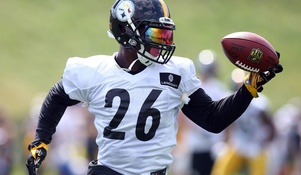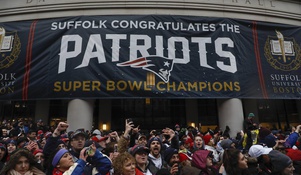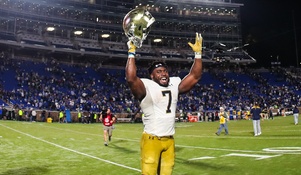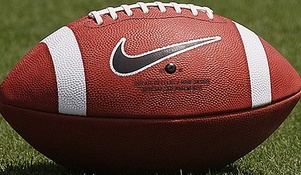How did Notre Dame recruit so well in Western Pennsylvania?
With signing day nearly here, college football teams are looking to the future.
Though many Pittsburgh products see Penn State and Pitt as their new homes for their four years of college football, not all go there.
When all high school seniors have signed their respective letters of intent on Wednesday, Notre Dame will gain three players from the Pittsburgh region. That is one more gain from the Pittsburgh region than Penn State and only one less than Pitt.
On Wednesday, Josh Lugg (North Allegheny), David Adams and Kurt Hinnish (both from Central Catholic) will all pen their names to become members of the Fighting Irish.
How can a university based in South Bend, Indiana, and 372 miles away from downtown Pittsburgh, recruit so well in this region?
Consider some significant figures in Pittsburgh history. Joe Montana, arguably the greatest quarterback of all time, graduated from Ringgold High School in Western, Pennsylvania, before heading to Notre Dame.
Rocky Bleier and Jerome Bettis are two running backs that did not grow up in Pittsburgh, but won Super Bowls with the Steelers after playing college football at Notre Dame.
Per Brandon Huffman, a national analyst at Scout.com, the “tradition, history and consistency of putting players at the next level,” is what appeals to prospective high school football players.
Josh Helmholdt, a Mid-West Regional Analyst for Rivals.com, also argues that the combination of academic and athletic enticement is pivotal to Notre Dame’s successful recruiting in the Pittsburgh area.
“Maybe Stanford can match Notre Dame in offering an athletics-academic combination,” Helmholdt said. “Another thing that I hear is that Notre Dame does an excellent job selling the next 40 years and what a Notre Dame degree can get.”
For Lugg, the highest ranked Western Pennsylvania offensive tackle on 24/7sports.com’s nationwide list, there were plenty of offers for a college football career. Penn State, Pitt, Virginia Tech, UCLA and Wisconsin were just a few of his many possible future homes.
However, it was Lugg’s first impression of Notre Dame early on that was pivotal to his decision.
“Lugg went to a camp at (Notre Dame) as a sophomore and then went on a visit to the university and came away impressed with the coaches, facilities and the tradition of the program and he committed soon thereafter,” North Allegheny head coach Art Walker said.
For Hinnish and Adams, their friendship was pivotal to their decision to play football in South Bend.
“They (Hinish and Adams) are close friends so they made their decision together,” Central Catholic head coach Terry Totten said. “After going to visit the camp and visiting the school they decided that Notre Dame was the best fit academically plus they were impressed with the coaching staff and the school's long winning tradition.”
Word-of-mouth cannot be underestimated in the linebackers’ decisions to join the Irish. They trusted each other’s opinions of Notre Dame and both chose to commit.
Ok, so Notre Dame impressed the players based on their visits and the academic benefits. Why do these players want to go to play for a team that just went 4-8?
Helmholdt said that “one subpar season does not affect recruiting long term.”
Huffman agreed, calling Notre Dame a top 15 recruiting class regardless of a bad year.
A bad season may not hurt recruiting significantly, but a head coach on his way out could. Brian Kelly had hung around as head coach after missing a bowl game for the first time since 2009. He just signed a six-year contract extension a year ago, but that didn’t stop Notre Dame from firing Charlie Weis in 2010 with five years remaining on his contract.
“When you’re talking about a coach on the hot seat, if you isolate that aspect, that definitely has a big impact on recruiting,” Helmholdt said. “Anytime there’s questions around the program, questions about stability, those are the things that have a bigger impact on recruits minds because they’re trying to make a four or five year decision.”
Per Huffman, it is beneficial that Notre Dame has not fired Kelly in the offseason because recruits would look at the university as tumultuous and could de-commit.
The Irish could have had four recruits from Western Pennsylvania this season. Defensive end Donovan Jeter out of Beaver Falls committed to Notre Dame in September, but de-committed a month later because he thought Kelly “wasn’t fun.”
Instead, Jeter opted for Michigan and its eccentric head coach, Jim Harbaugh.
Unlike prior questions, Huffman and Helmholdt differed in their thoughts on Jeter’s de-commitment to Notre Dame affecting future recruits. Huffman said that one person’s opinion does not speak for the rest of the class.
“You don’t hear guys saying Nick Saban’s a lot of fun, but yet he’s still bringing in the best classes,” Huffman said. “So, I think it’s that what may work for some guys, doesn’t work for others. I don’t think it’s going to scare people off from Notre Dame just because Donovan Jeter said that.”
Helmholdt thinks it didn’t affect this current class, but could affect future classes.
“In that particular instance, I think recruits paid attention,” Helmholdt said. “It’s that first impression for kids.”
It did not affect Lugg, Hinnish or Adams, but it is something to watch for in the future. At the time that all three committed, the 2016 football season was young. Now that it is finished and Kelly is on thin ice, the class of 2018 may respond differently when Notre Dame comes knocking.
Perhaps it was an anomaly, because Notre Dame did not gain any football recruits from the Pittsburgh area since 2009. In 2017, though, the Irish struck gold in Western Pennsylvania with three four-star recruits.





